Thinking about getting a hand tattoo? This is the ultimate statement piece. Your hands are always visible, always moving, creating, and touching the world. Because of this, a tattoo here is a very big deal. It is a mark that shows everyone who you are. This placement demands a strong commitment, not just in your design choice, but in the long-term care of the art.
This guide will show you why the hand is a special, powerful canvas, looking at its deep history, the meanings it holds, and the special care you must give this highly visible ink.
History and Cultural Weight:
The history of the tattoos on hand shows why it carries so much weight today. For thousands of years, ink on the hands was used to mark people in big, public ways.
The Mark of Honor and Status
The practice of tattooing the hands dates back to ancient times. In many cultures, ink on the hands or fingers was a symbol of high status, bravery, and deep heritage.
- Polynesian Tradition: In Polynesian cultures, hand tattoos were intricate designs that told stories of lineage and social standing .
- Protection Symbols: Sailors and coal miners in Western history would often get small tattoos on their forearms and hands, like an anchor. This was seen as an amulet to give them spiritual protection in risky jobs .
The Shadow of Stigma
However, ink on the hands also has a troubled past. Because the mark is so visible, it was often used for punishment or shame.
- Ancient Punishment: In ancient Chinese history, criminals were marked on the face or hands with permanent ink as a public punishment to show they were outcasts .
- The Modern Bias: The visible tattoo was often linked to subcultures in the 20th century, like military life or prisoners. This history is why the hand ink art still struggles with acceptance in many professional settings today. It is seen as a bold mark that challenges old rules.




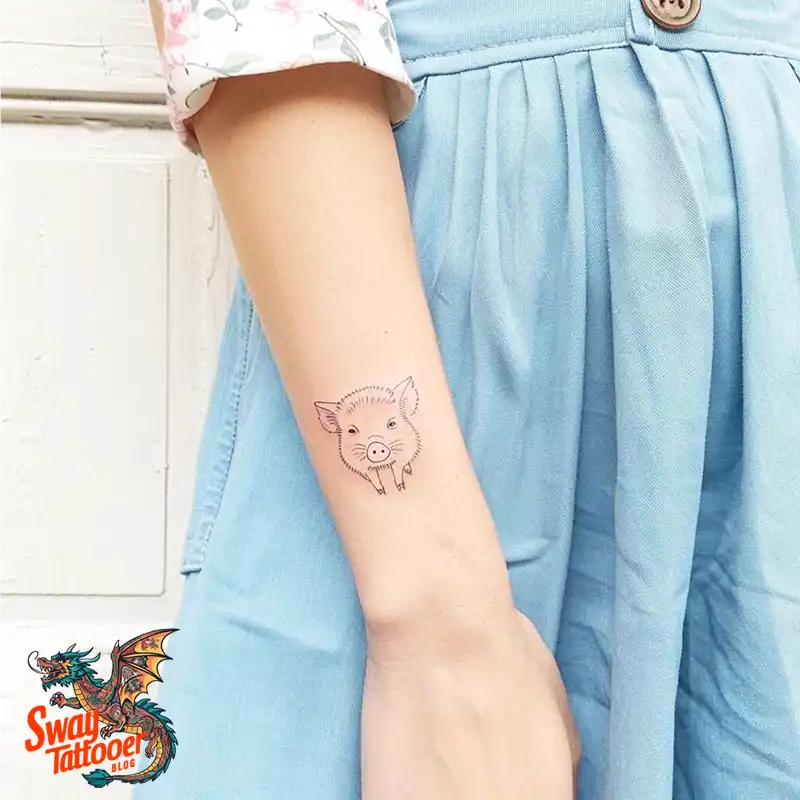
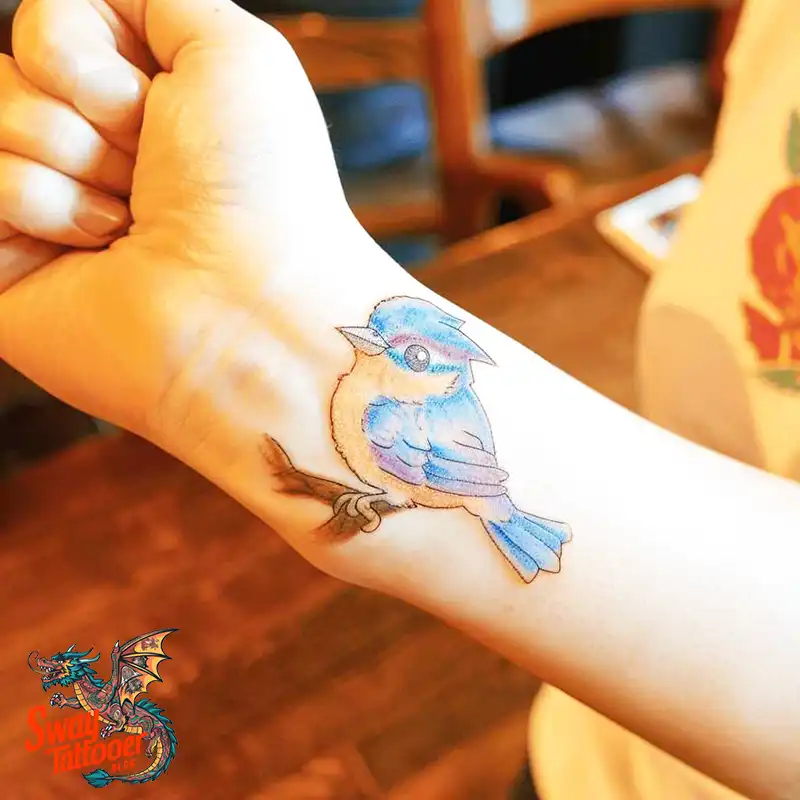

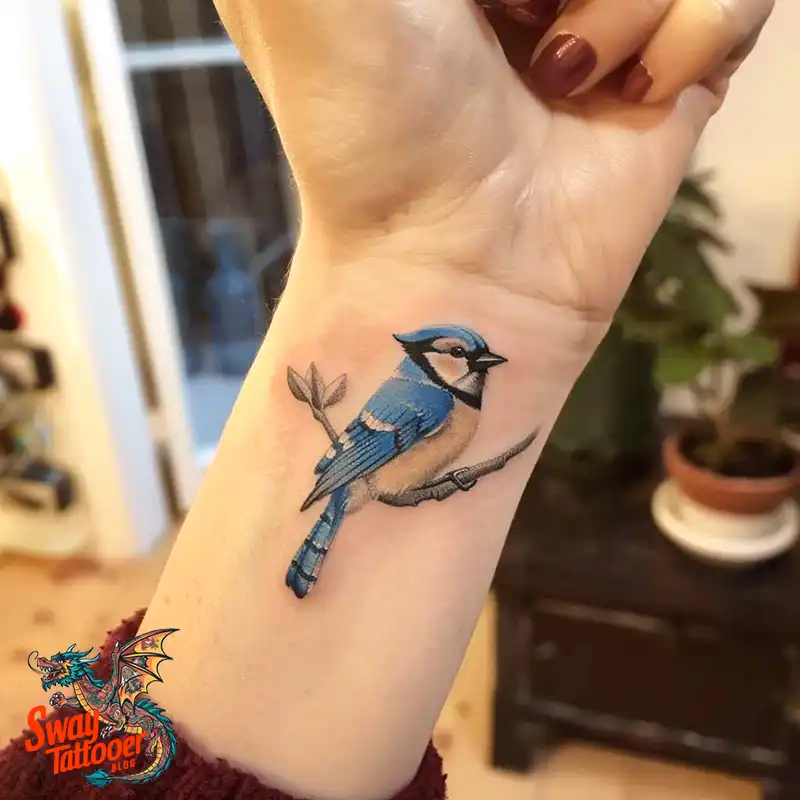
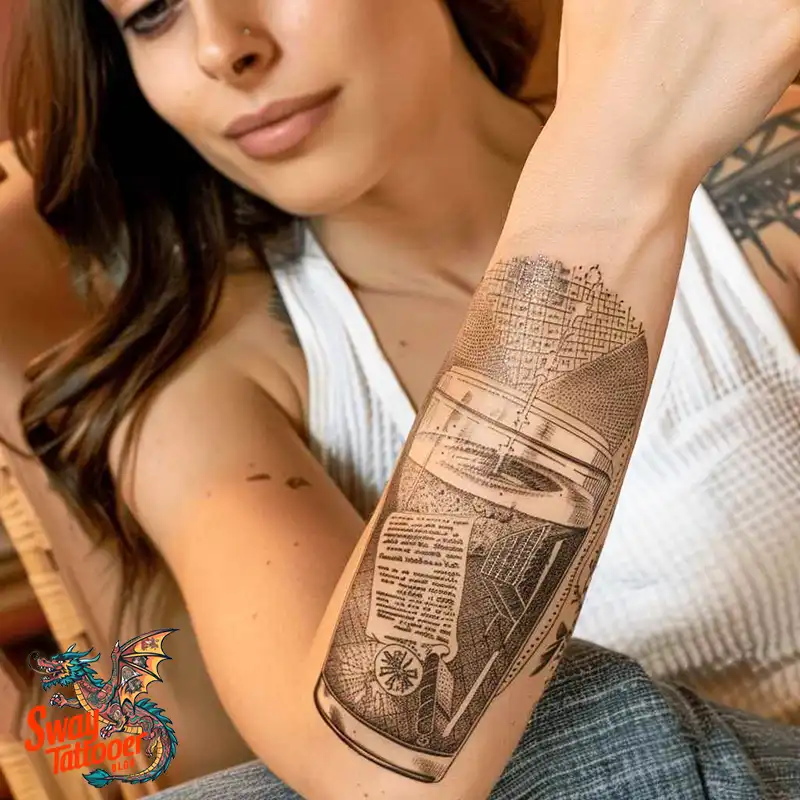
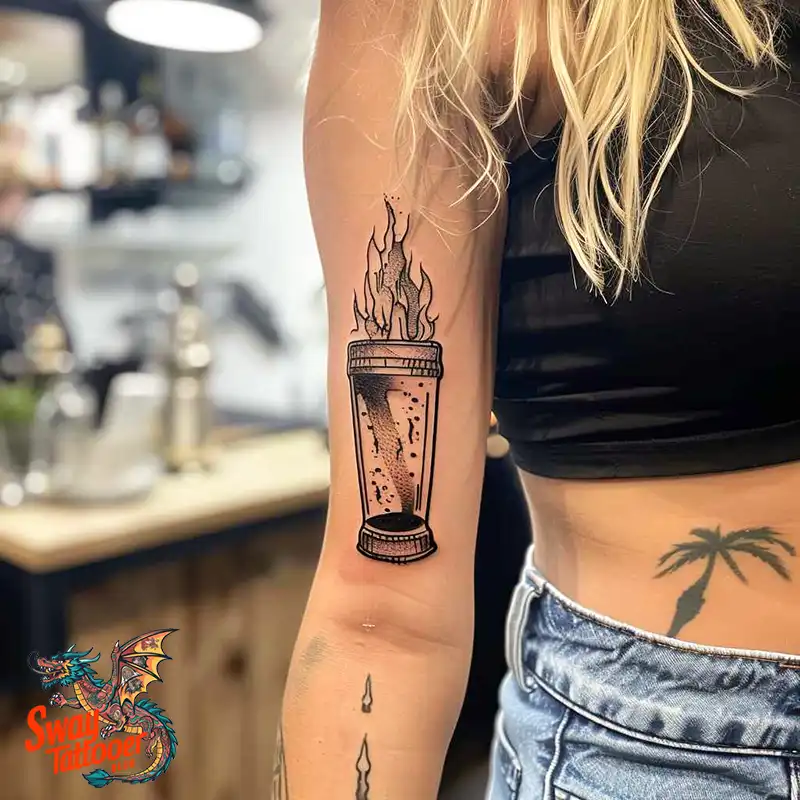

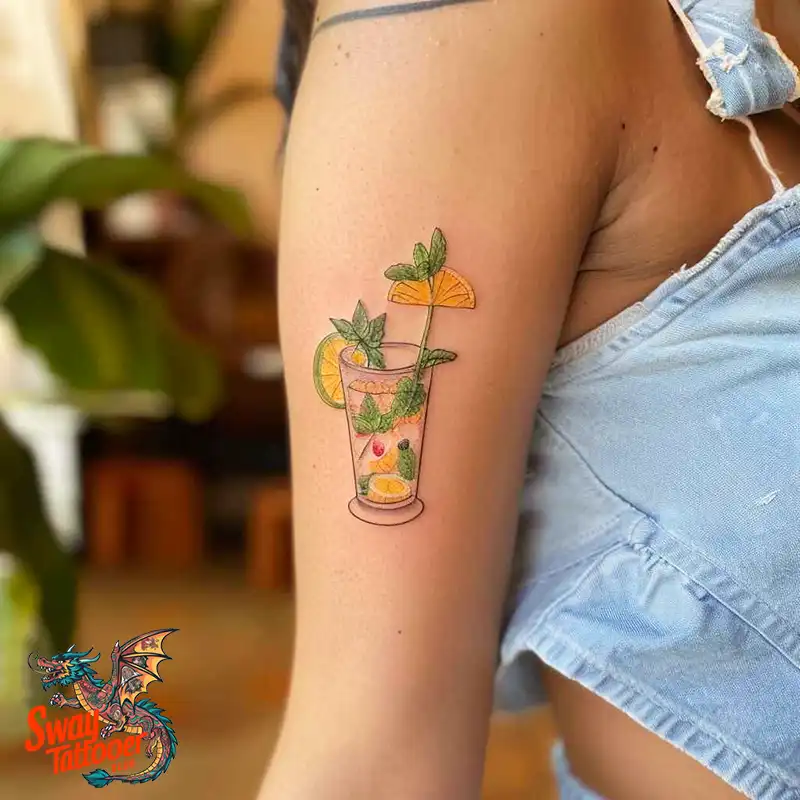


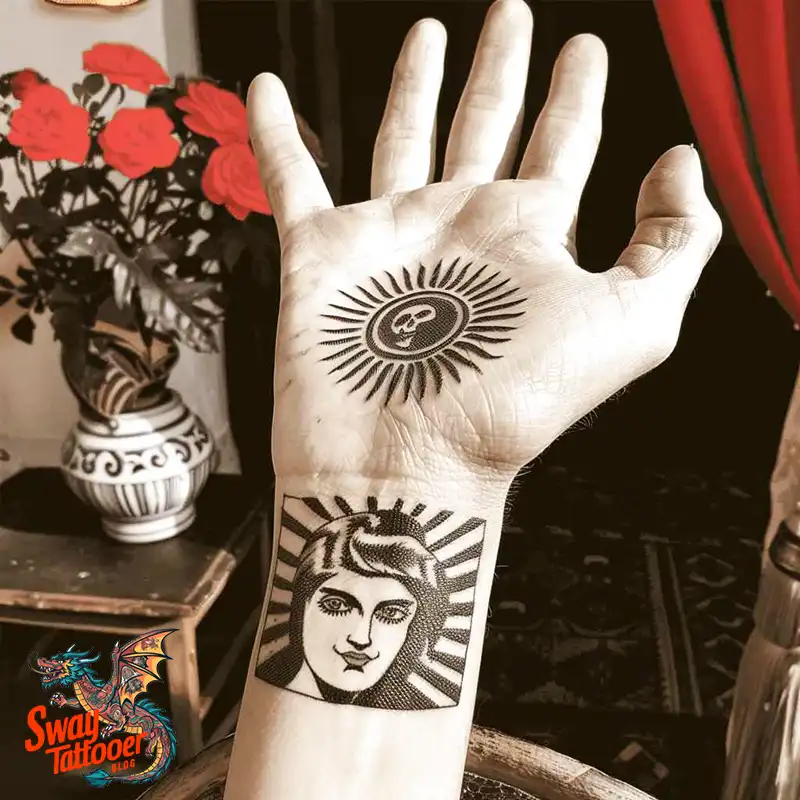


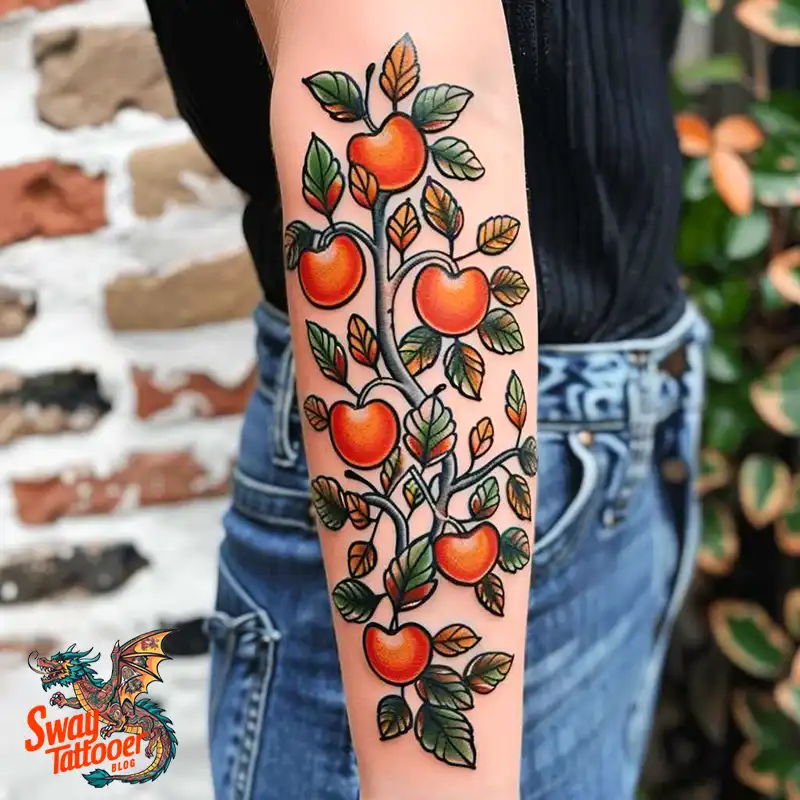

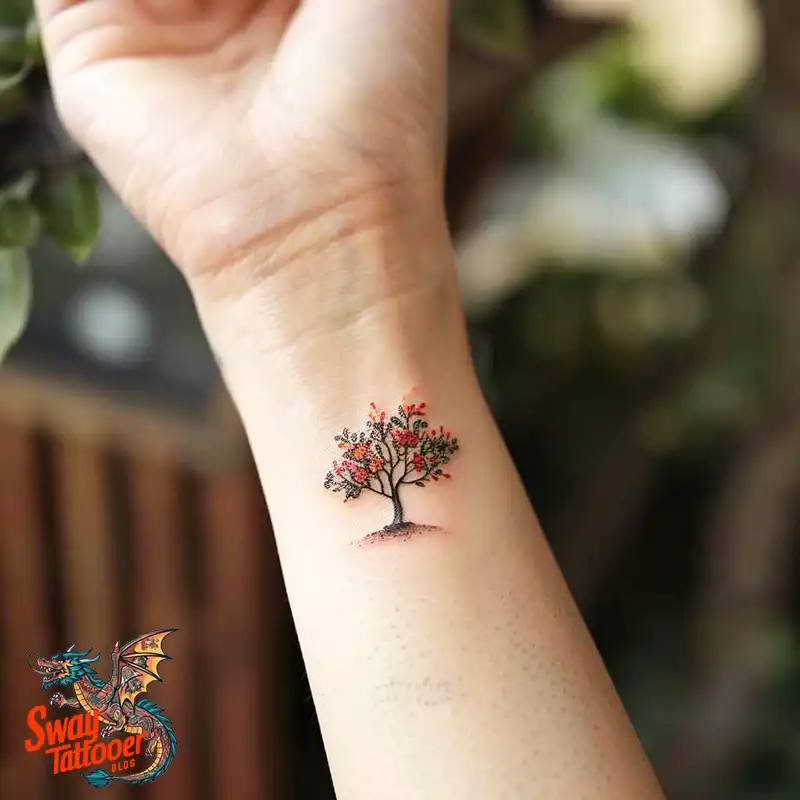






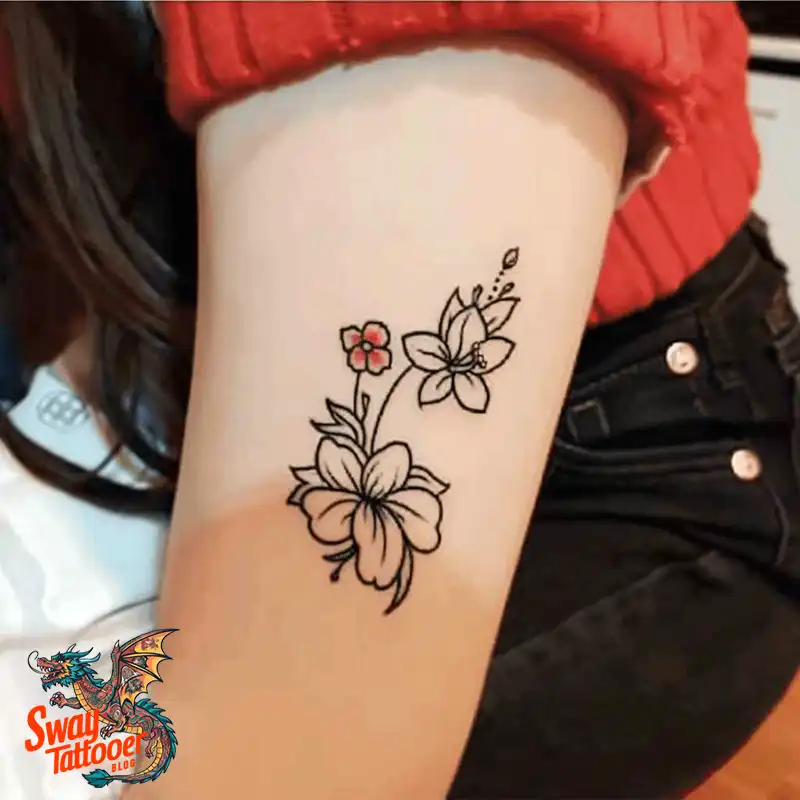
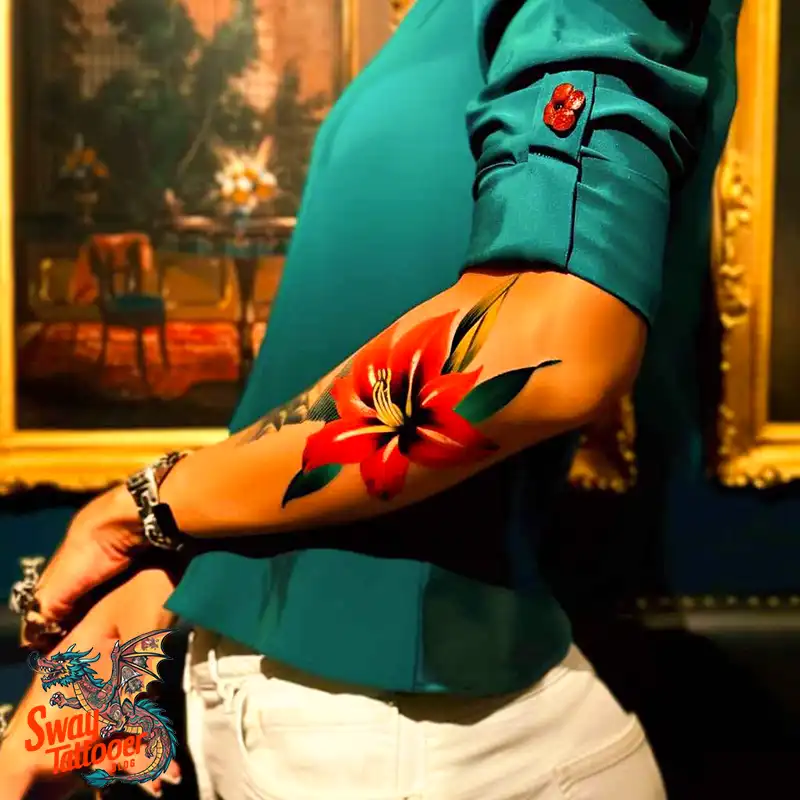


The Language of the Hand:
Your hands are the tools you use to work, create, and show affection. Placing a tattoo here turns the design into an active, constant reminder of your beliefs.
Destiny, Creation, and Protection
A hand tattoo often symbolizes an acceptance of life’s journey, or a deep need for protection and guidance.
- Destiny and Fate: Many designs speak to destiny and fate. The tattoo serves as a constant reminder that while you may not control everything, you have the strength to face life’s path with courage . In Norse mythology, symbols like the World Tree (Yggdrasil) were used to show the web of fate and were often placed on the hands or arms .
- A Personal Mantra: As a visible instrument, the tattoo is a personal mantra. Simple symbols like an anchor mean stability and resilience . Celestial bodies—suns, moons, and stars—are popular choices for the hands, acting as guiding lights.
Popular Design Locations
- The Top of the Hand: This flat area is the largest canvas on the hand. It is often chosen for complex designs, like geometric patterns or mandalas, which stand for balance and spiritual harmony.
- Fingers and Knuckles: These smaller areas are popular for lettering, like names or short words, or very small, minimalist symbols. The side or inside of the finger offers a low-key option that is easy to keep private.
Design Ideas and Longevity
The hand is one of the hardest places on the body for a tattoo to heal and stay bright. You must choose your design style carefully to fight against fading.
Bold Ink Holds Best
The style you choose directly affects how long your tattoo will look good.
- Traditional Styles: Styles with bold, thick lines and heavy black ink (like American Traditional) are much more durable on the hand . The heavier ink density holds its shape longer and resists the fading caused by constant rubbing and washing.
- Fine Line Dilemma: Fine line tattoos, which use a lighter touch and less ink, are elegant but very fragile on the hand . Because the skin on the hand is thin and moves constantly, fine line designs are prone to softening and blurring over time . If you choose this style, you must be ready for frequent touch-ups every year or two to keep the lines sharp .
The Fading Challenge
Hand tattoos fade faster than ink on almost any other body part.
- High Friction: The skin on your hands is always moving, washing, and rubbing against clothes or surfaces. This friction wears down the ink faster than on stable areas like the back.
- Palm Tattoos: The palm is the hardest spot to keep ink in. It has a very high cell turnover rate and is constantly stretching, making palm tattoos notoriously difficult to heal and maintain .
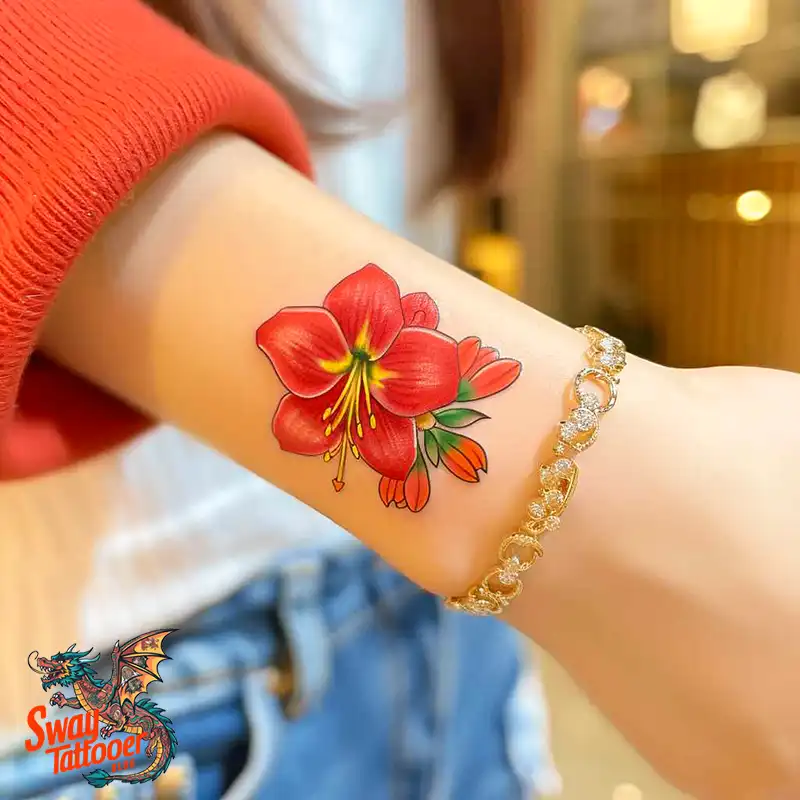
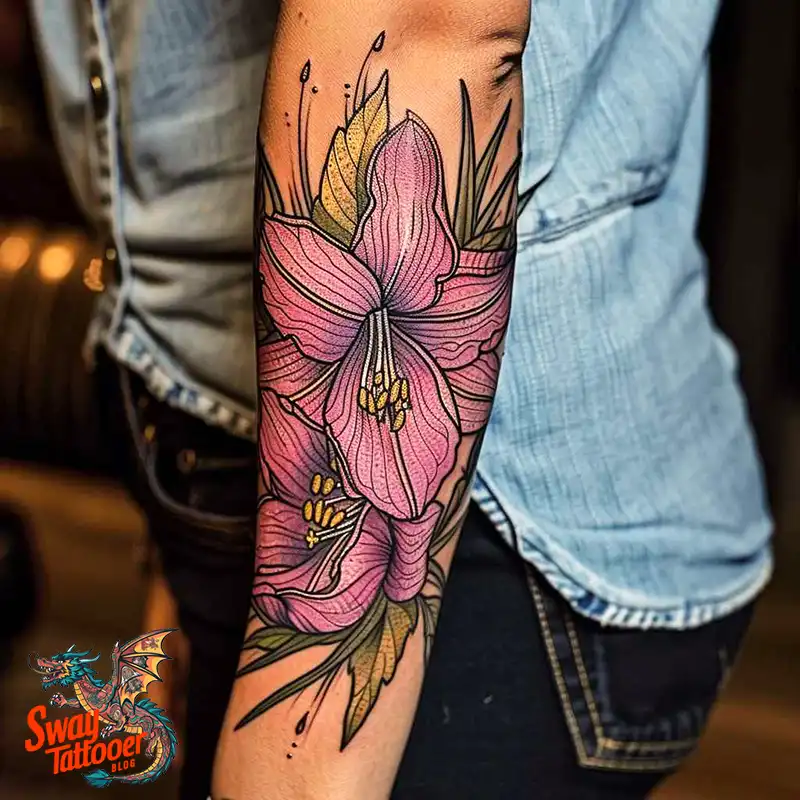
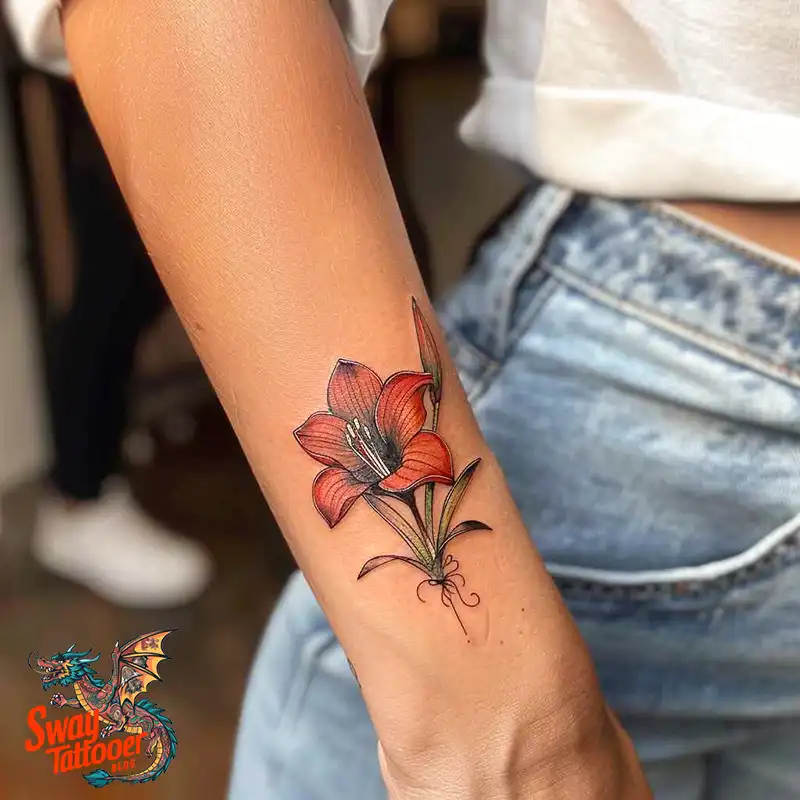
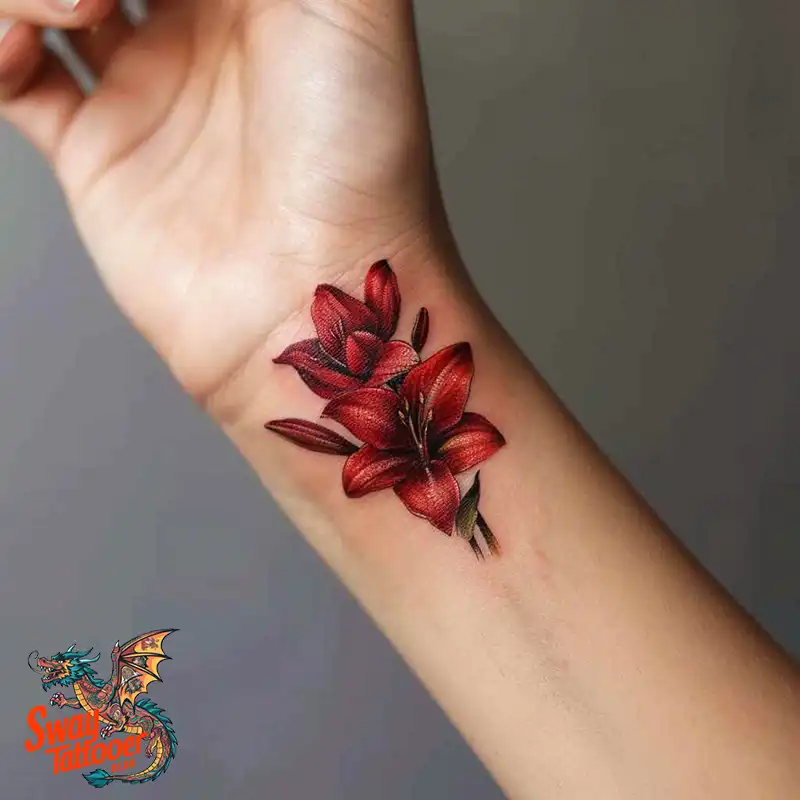
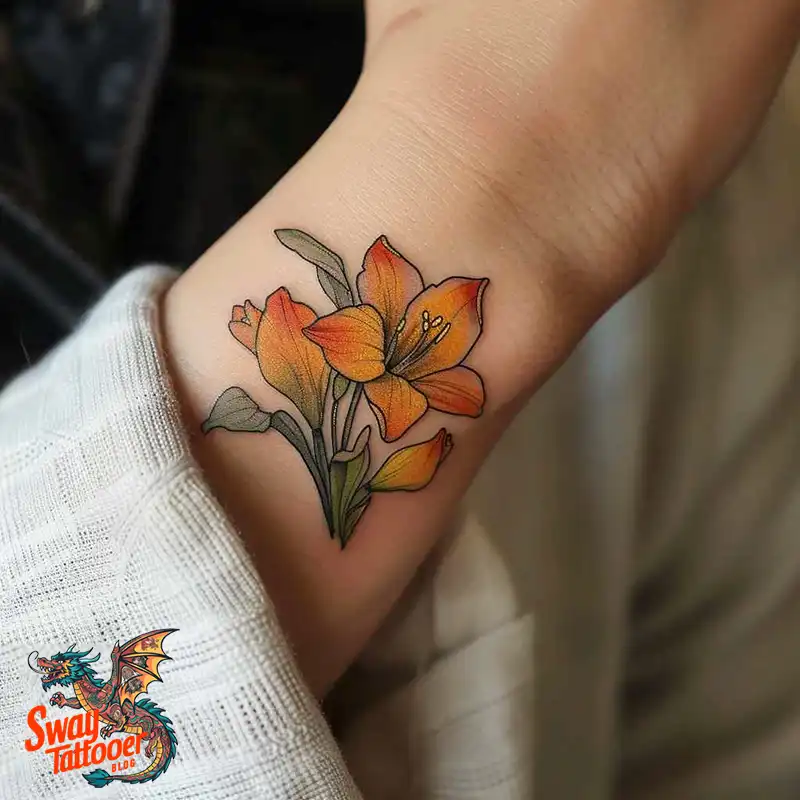


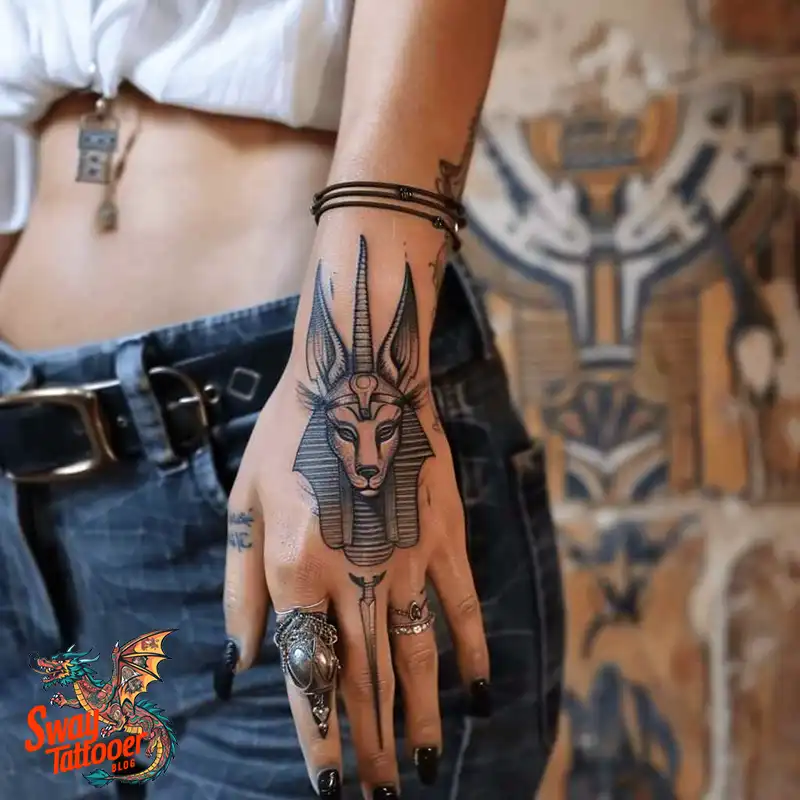
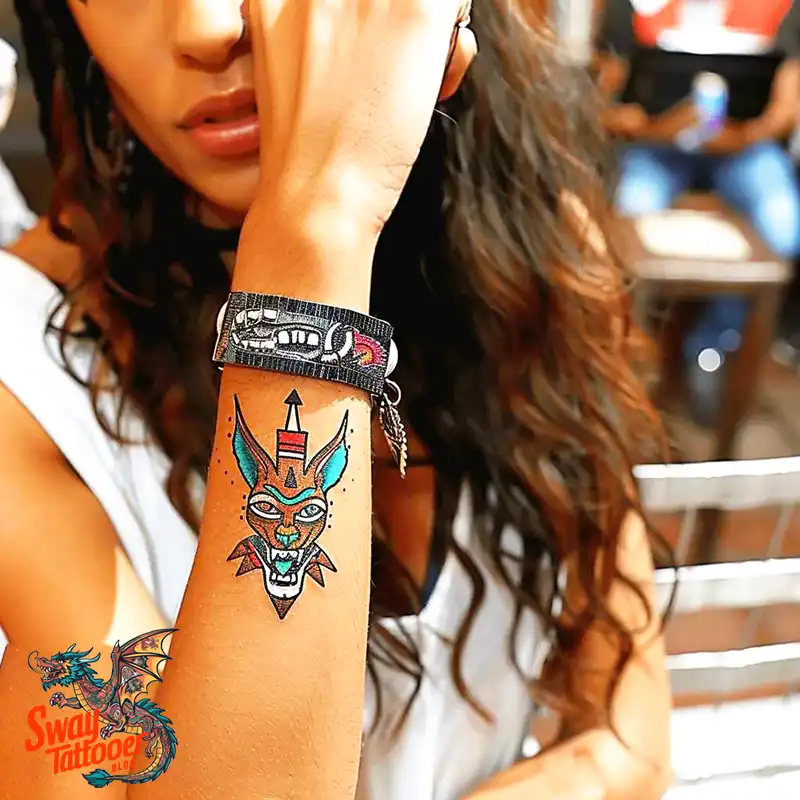


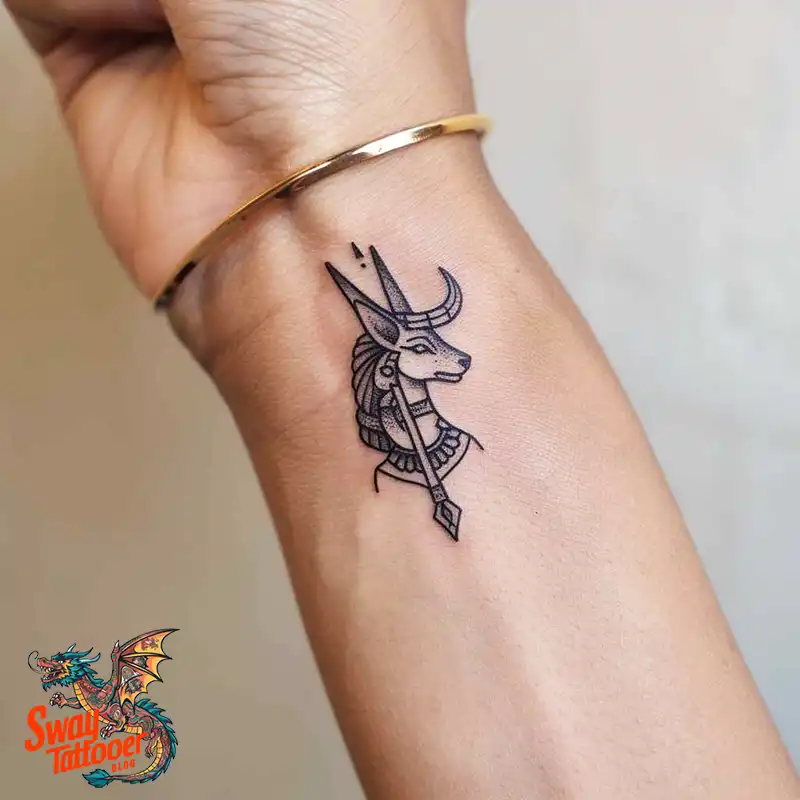
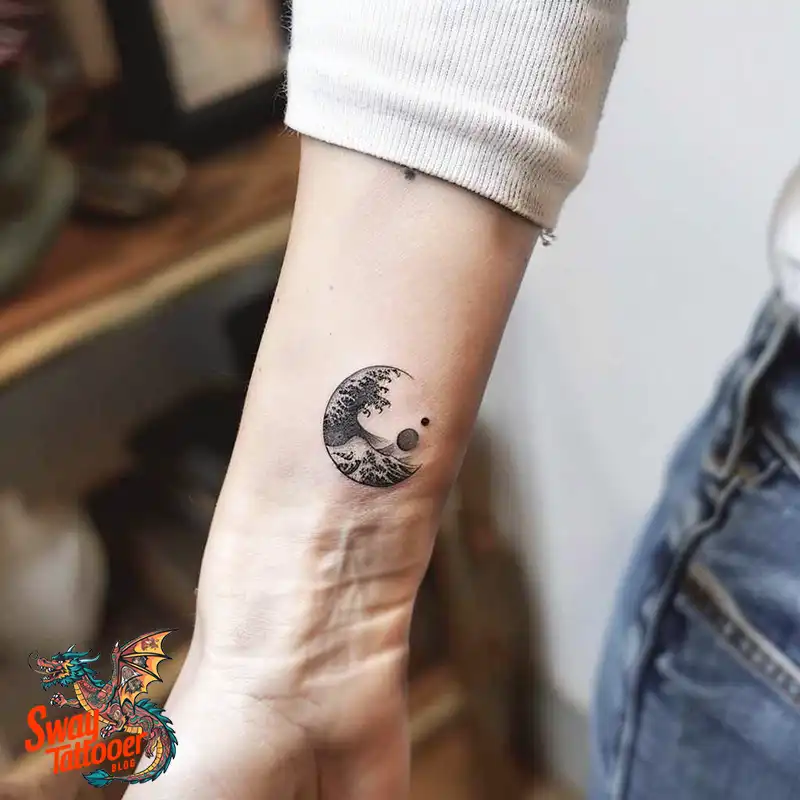
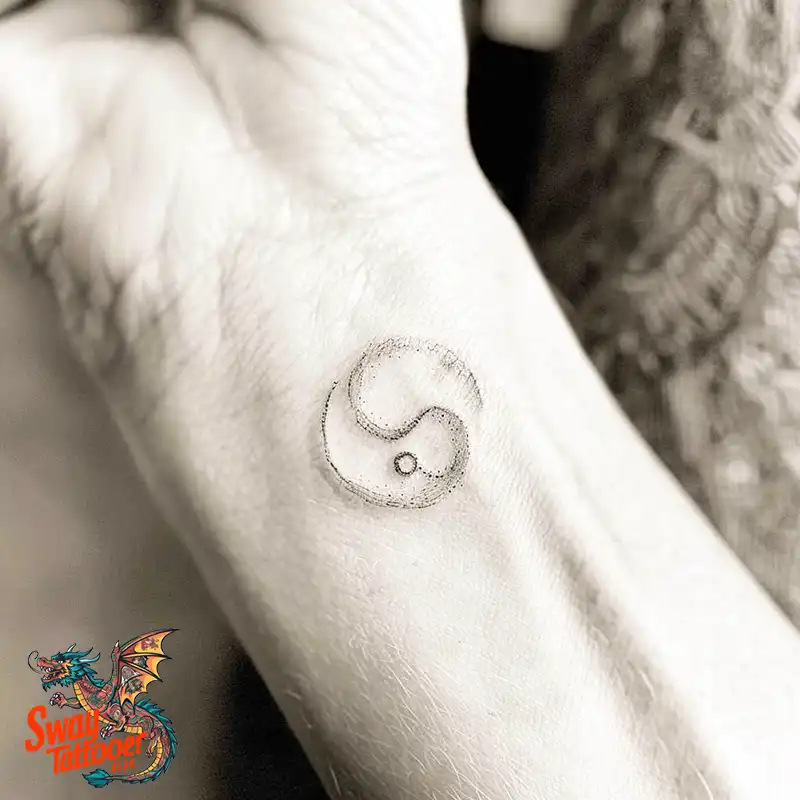
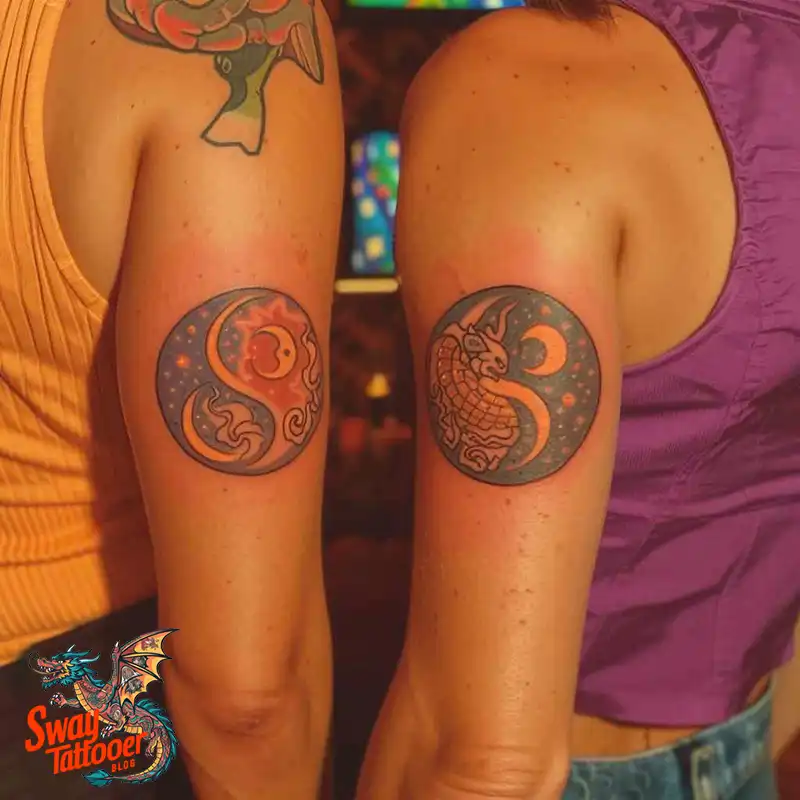

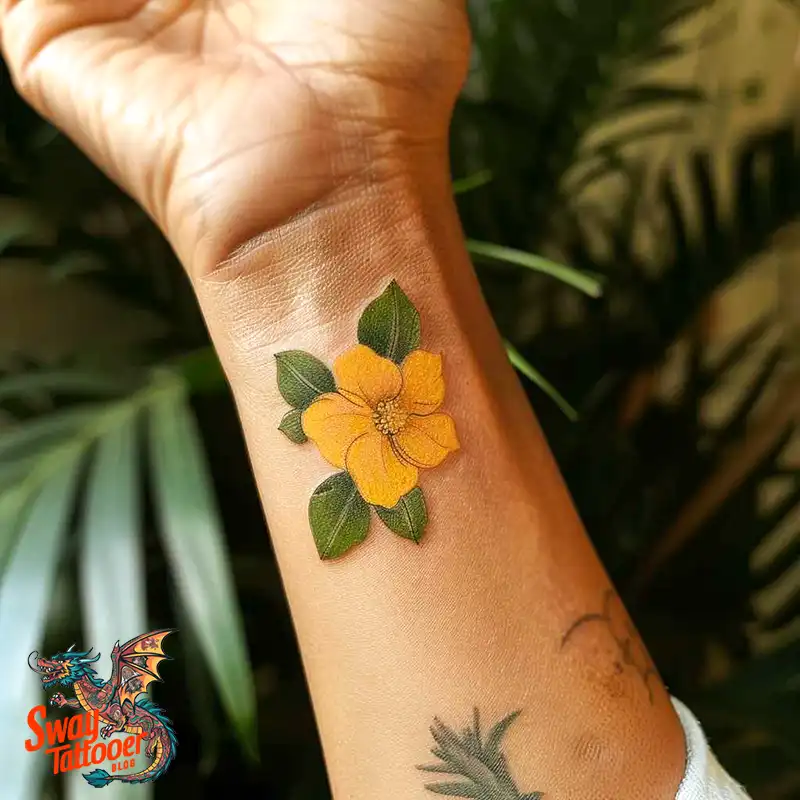
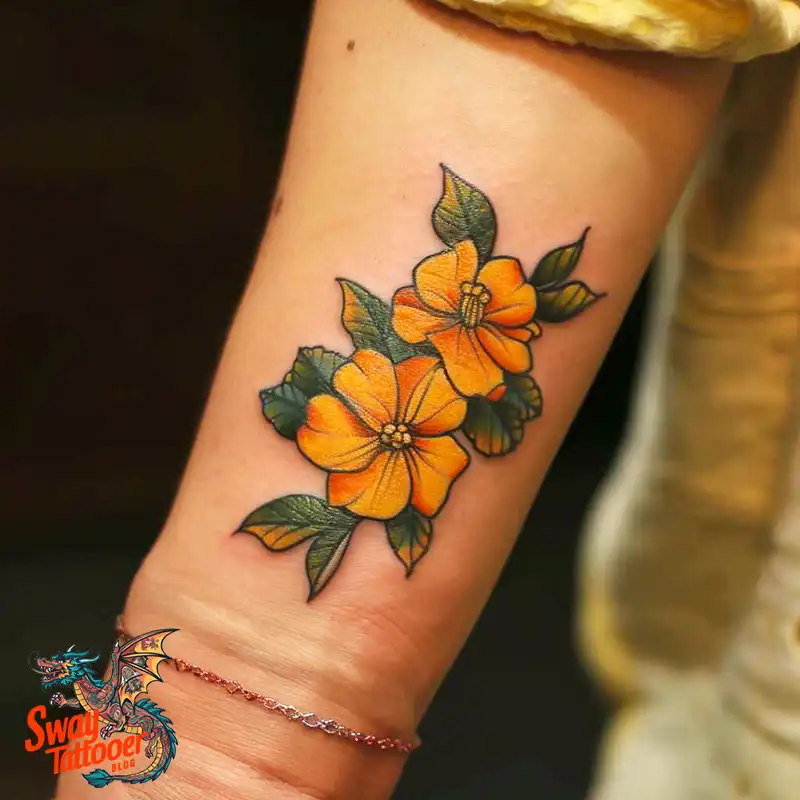
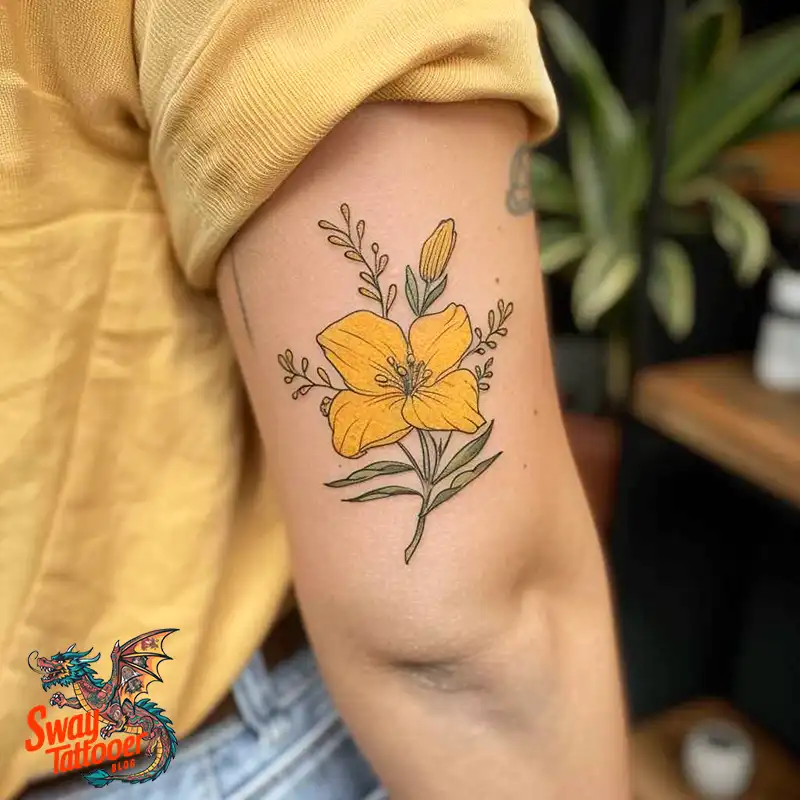
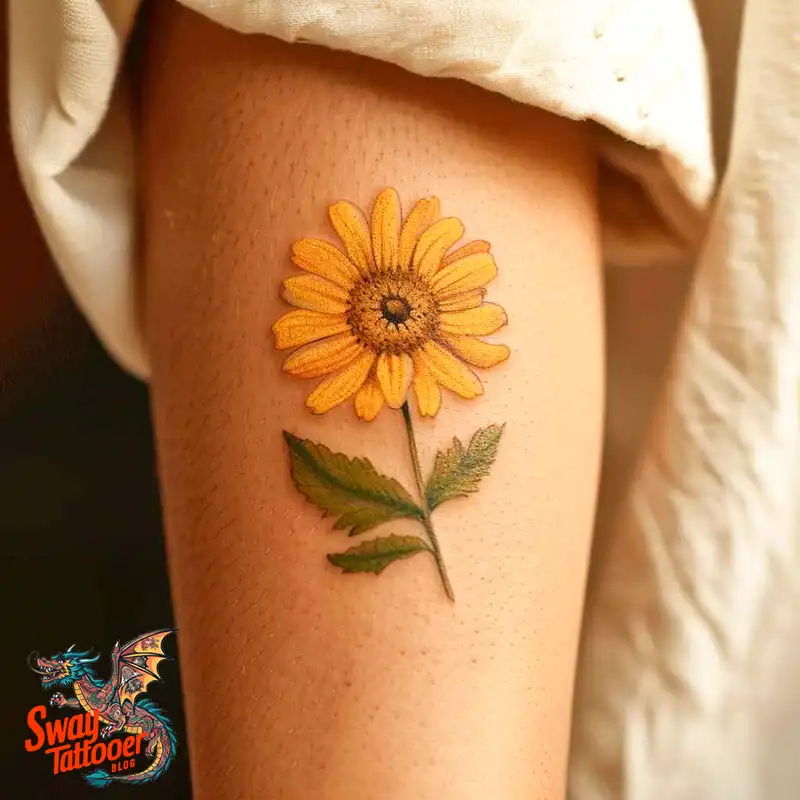

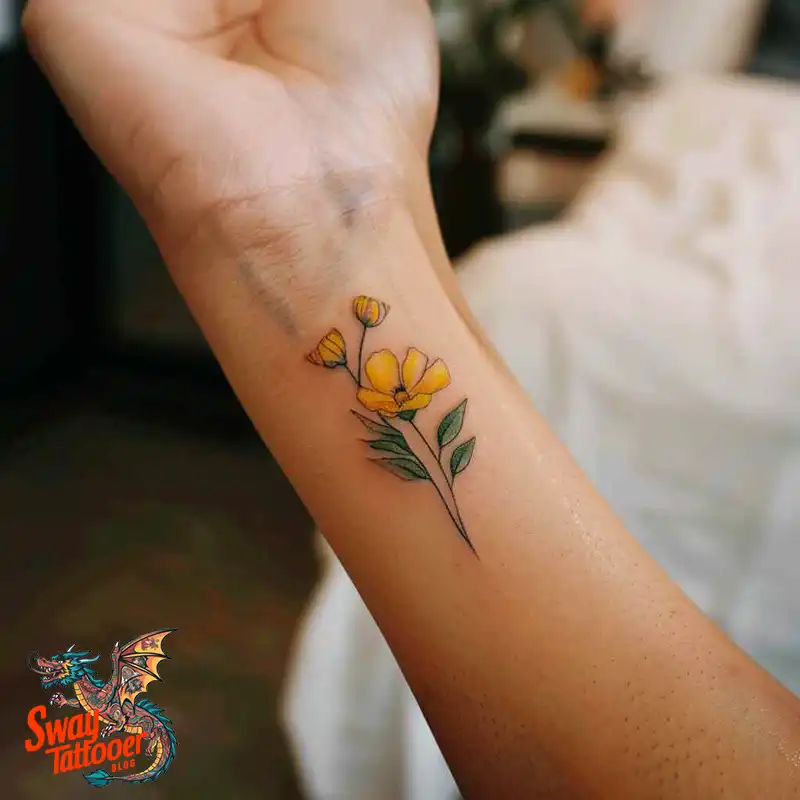


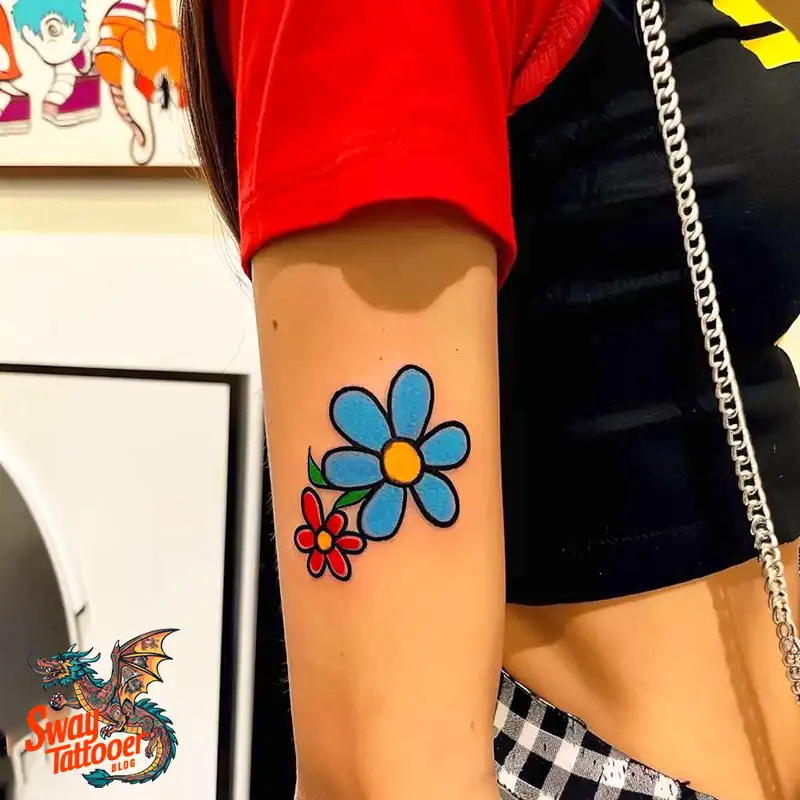
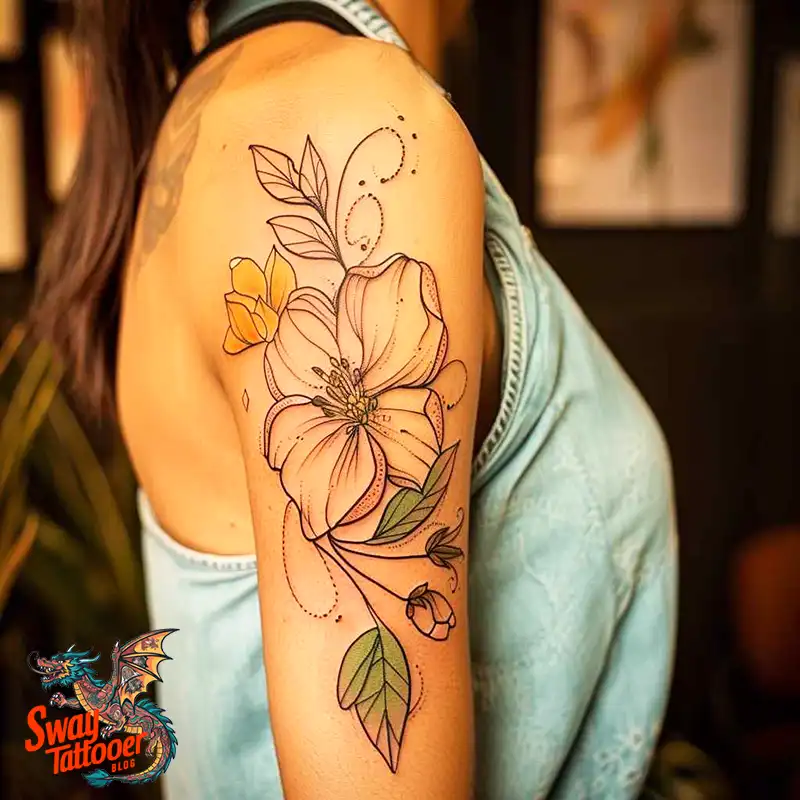

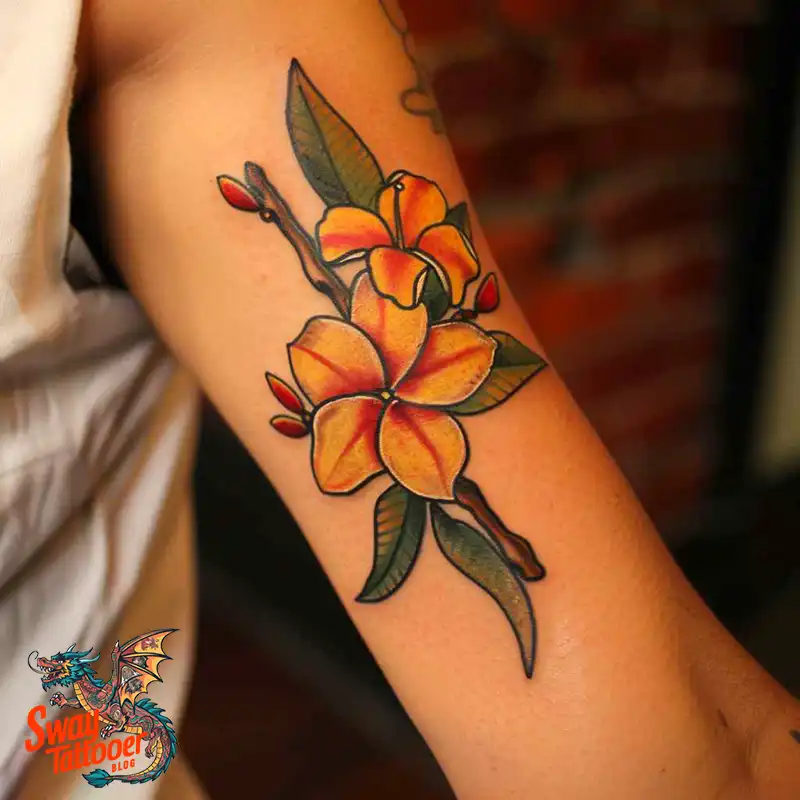
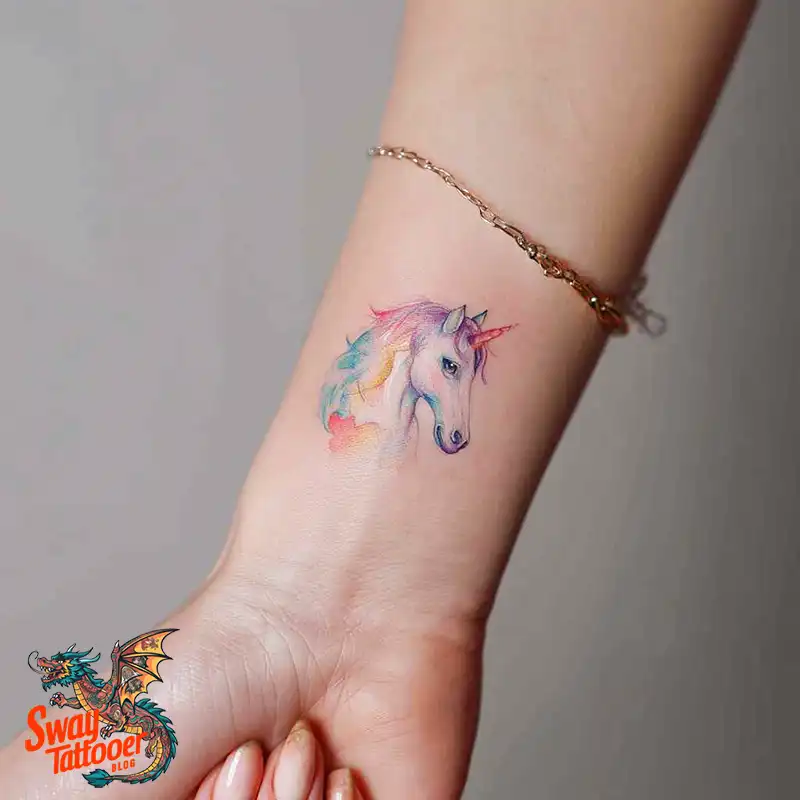

The Professional Reality:
When you choose a hand ink tattoo, you need to think about your job. Hands are the last area to gain full acceptance in the workplace. Historically, this visible placement has been called a “job stopper” for a reason.
Acceptance Is Growing, But Bias Stays
Tattoos are much more common now. Almost 50% of young adults (Millennials) have ink, and most managers agree that workplaces are much more accepting than they were ten years ago.
- The Final Frontier: Even though tattoos are common, hand, finger, and face tattoos are still the biggest hurdle. In many traditional jobs, they are still considered “deal breakers” during the hiring process.
- The Unseen Bias: The risk is not always in the company’s written rules. It can come from unconscious bias—both from hiring managers and from customers who might have old-fashioned ideas. This means that in customer-facing roles, the tattoo might still be seen as a risk.
Acceptance Depends on the Job
The rules change greatly depending on what kind of job you have:
- Creative Jobs: In fields like art, marketing, or mixology, a hand tattoo can be seen as an asset. It shows creativity and a unique, artistic image that clients might like.
- Corporate or Formal Jobs: In places like large hotels, corporate offices, or law firms, the rules are often very strict. These places sometimes keep outright bans on visible tattoos to avoid upsetting conservative clients.
Advice for Your Career: If you are planning a career in a traditional field, experts often suggest securing your job first. Wait until you have proven your skill and dedication. Then, your competence is likely to outweigh the initial bias against the tattoo.
Aftercare:
The hand is one of the hardest areas of the body to heal a tattoo. It needs a special, high-effort routine to lock in the ink and prevent fading.
The Non-Stop Cleaning Challenge
The hand is always exposed to bacteria and dirt. You must wash it often to prevent infection. This creates a problem: constant washing strips the skin of its natural moisture, which leads to fading.
- Wash Frequently: You must wash your new tattoo at least three to four times a day with lukewarm water and a mild, fragrance-free antibacterial soap. Wash immediately after eating or touching anything dirty.
- Moisturize Constantly: This is the most important step for a hand tattoo. Because the skin gets so dry, you must apply a tiny, light layer of lotion three to five times a day, immediately after every wash.
- Avoid Thick Creams: Do not use thick, petroleum-based products like Aquaphor or Vaseline. These are too heavy and can trap moisture, which can hurt the healing process.
- No Soaking: For at least two to four weeks, you must keep the tattoo completely out of water. No swimming, hot tubs, or long baths, as this risks infection and ink loss.
Avoiding Damage: Blowouts and Friction
The thin skin over the knuckles and top of the hand is prone to a specific problem called a blowout. A blowout happens when ink is pushed too deep and spreads out under the skin, looking like a bruise.
To help prevent this, choose an expert artist who knows how to work with thin skin. Once inked, avoid pressure, friction, or sleeping directly on the area while it heals.

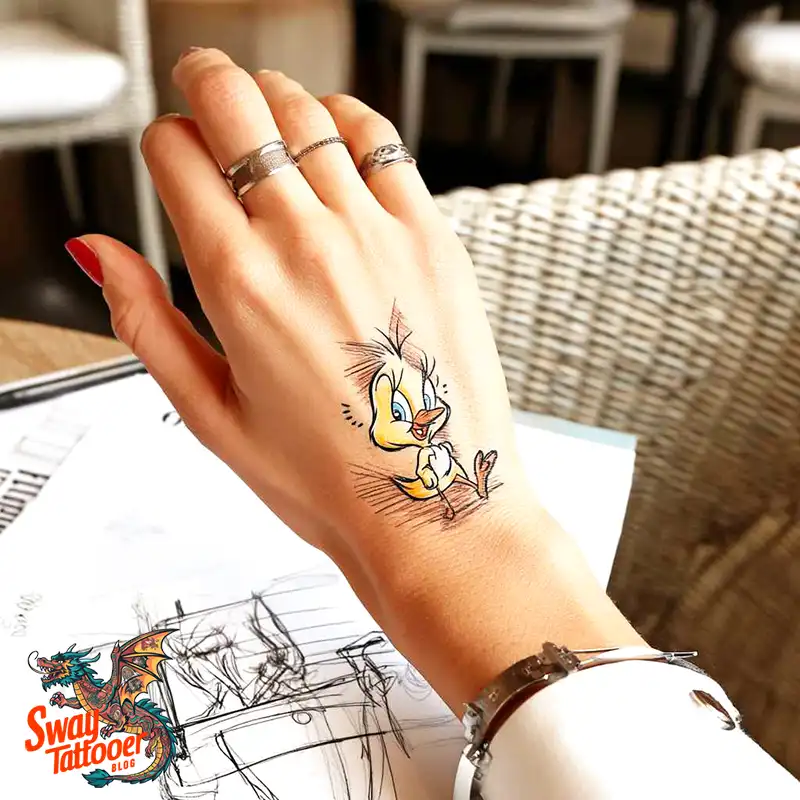
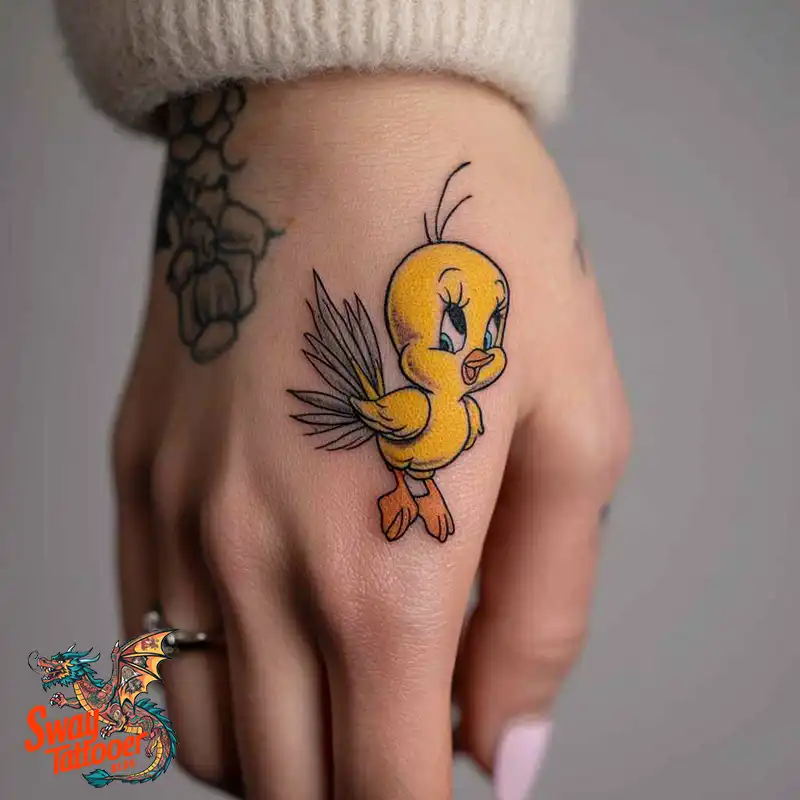

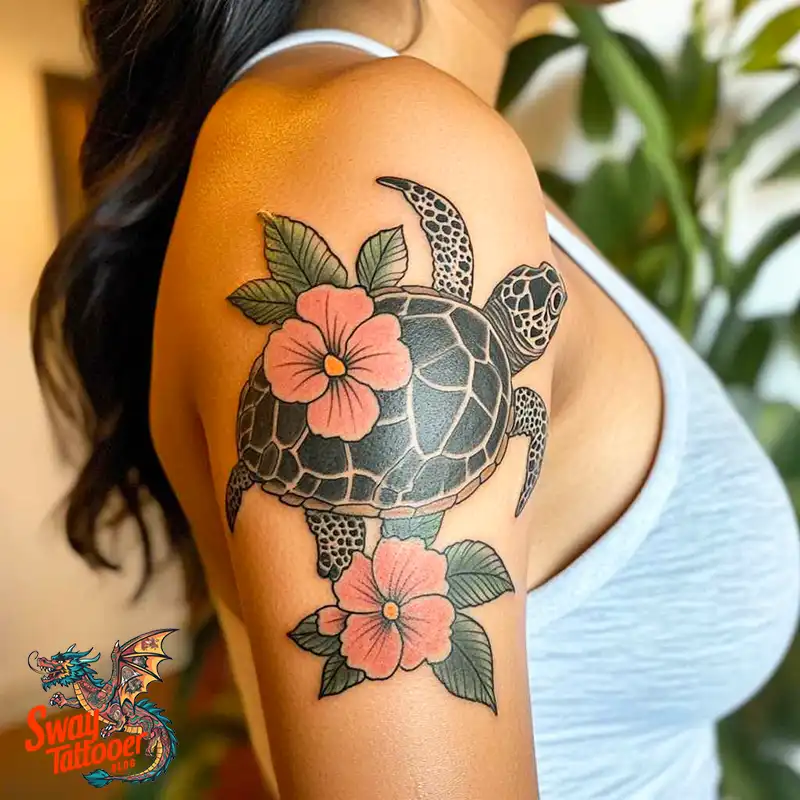


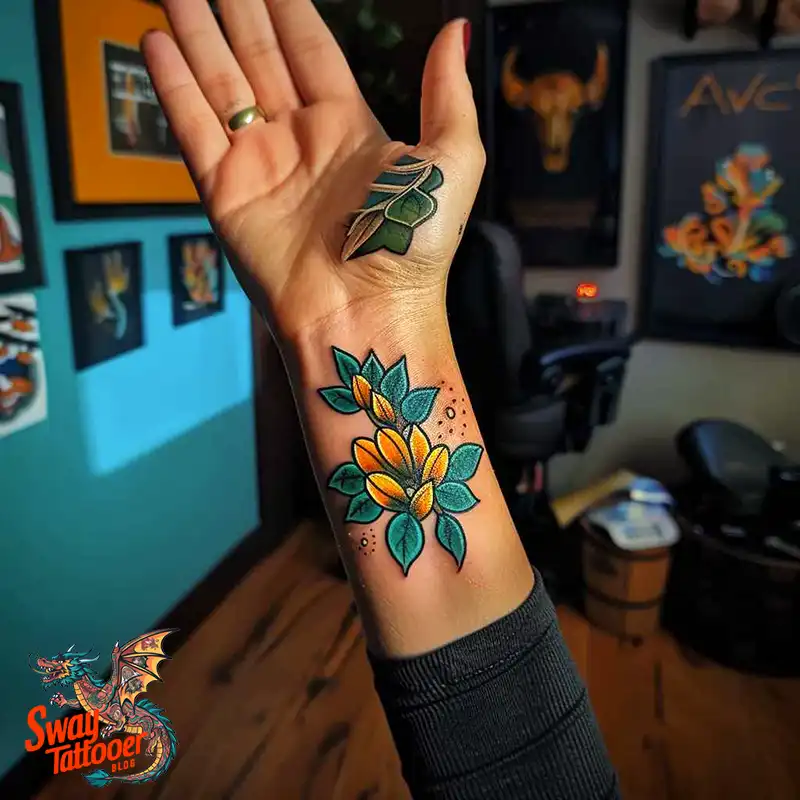
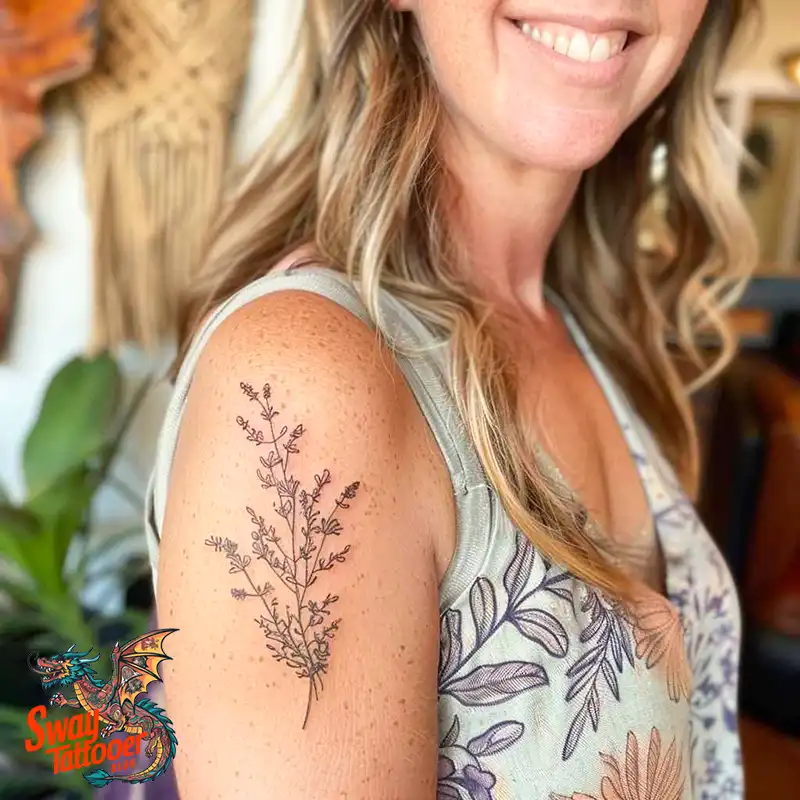

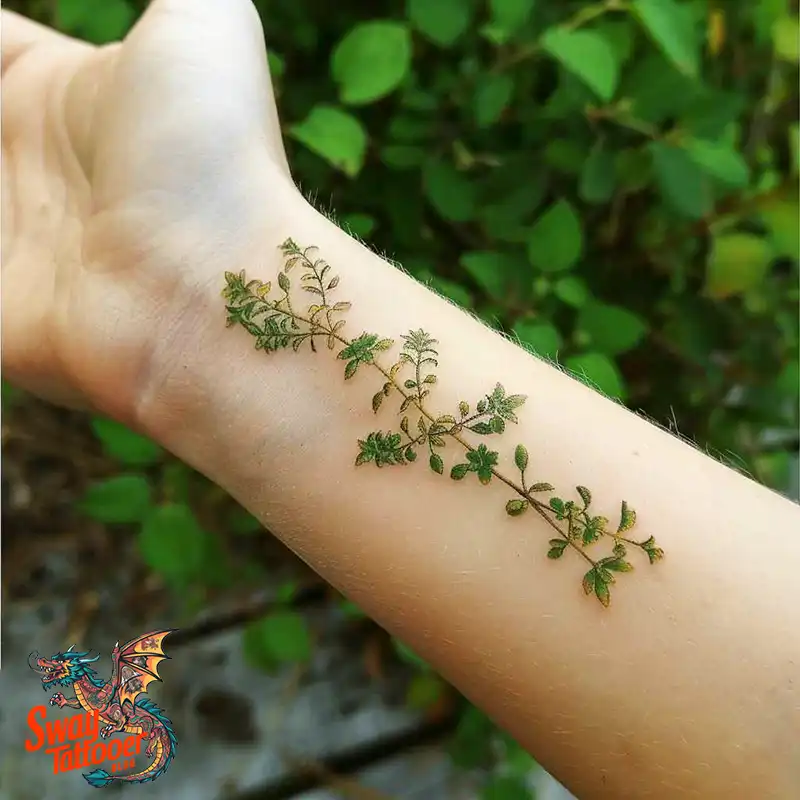
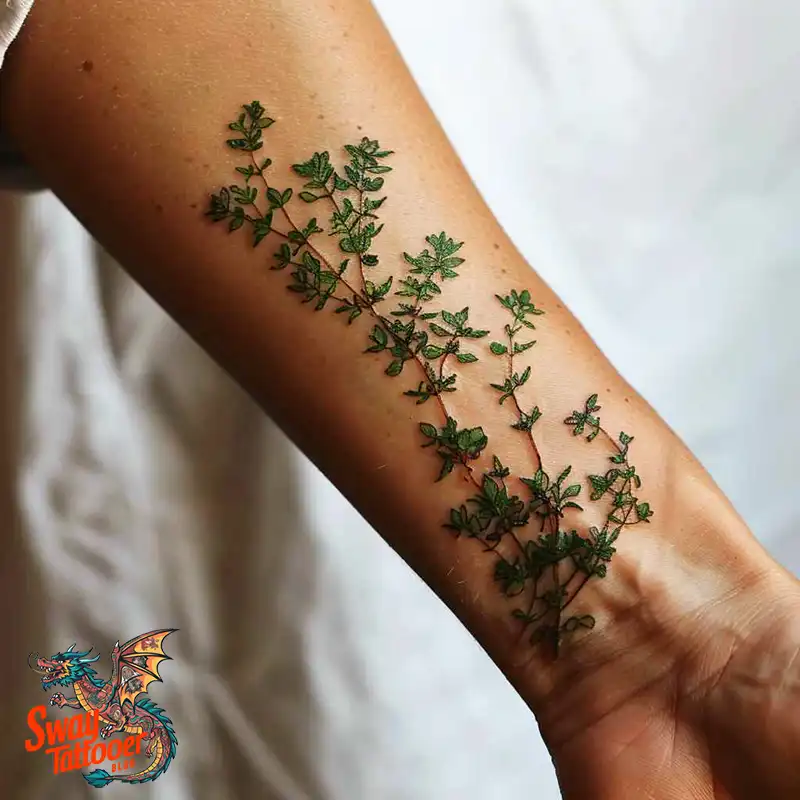

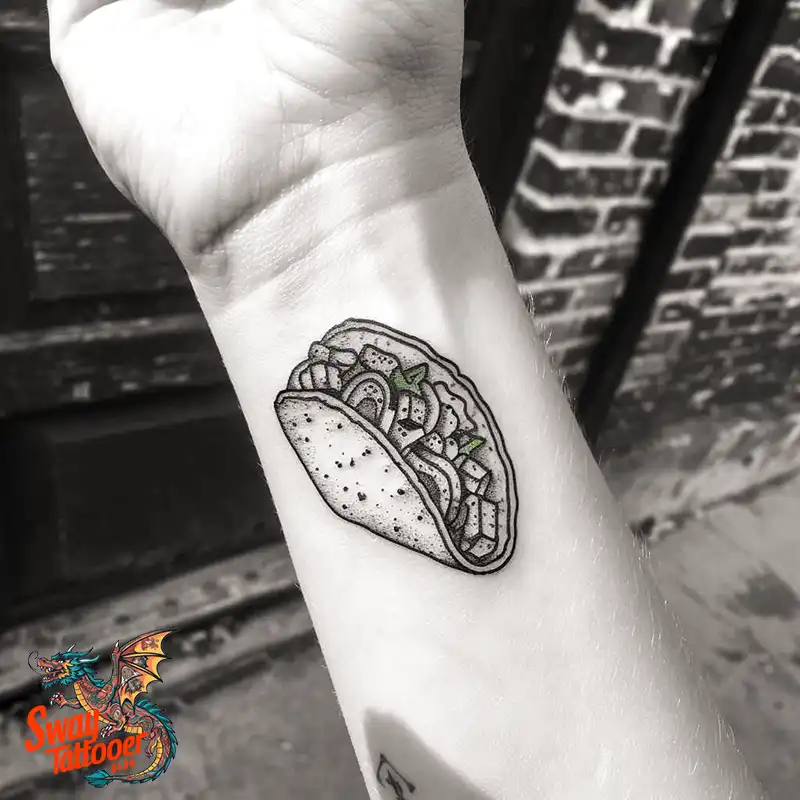
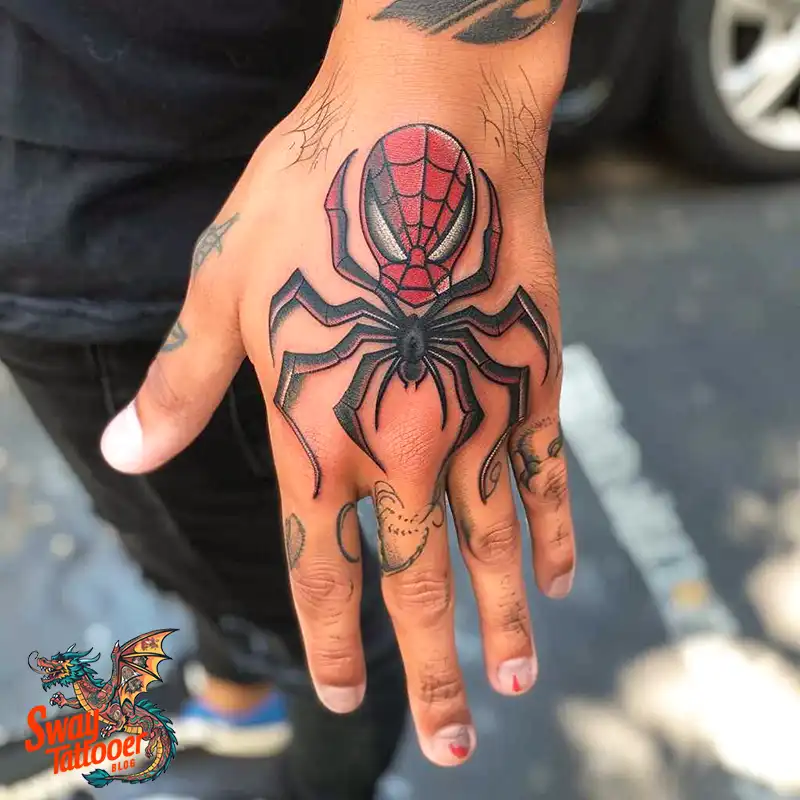
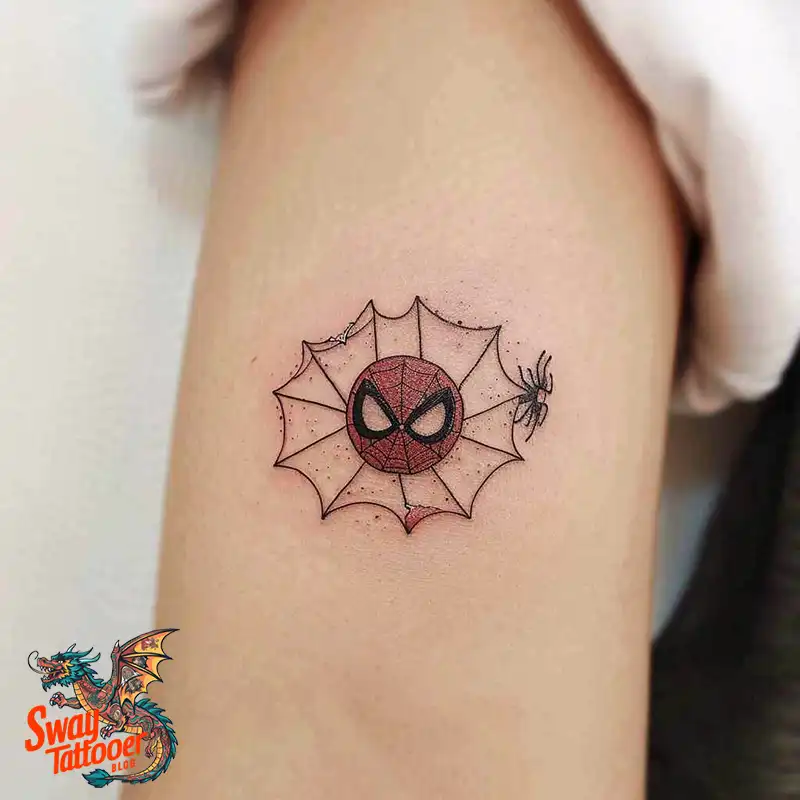



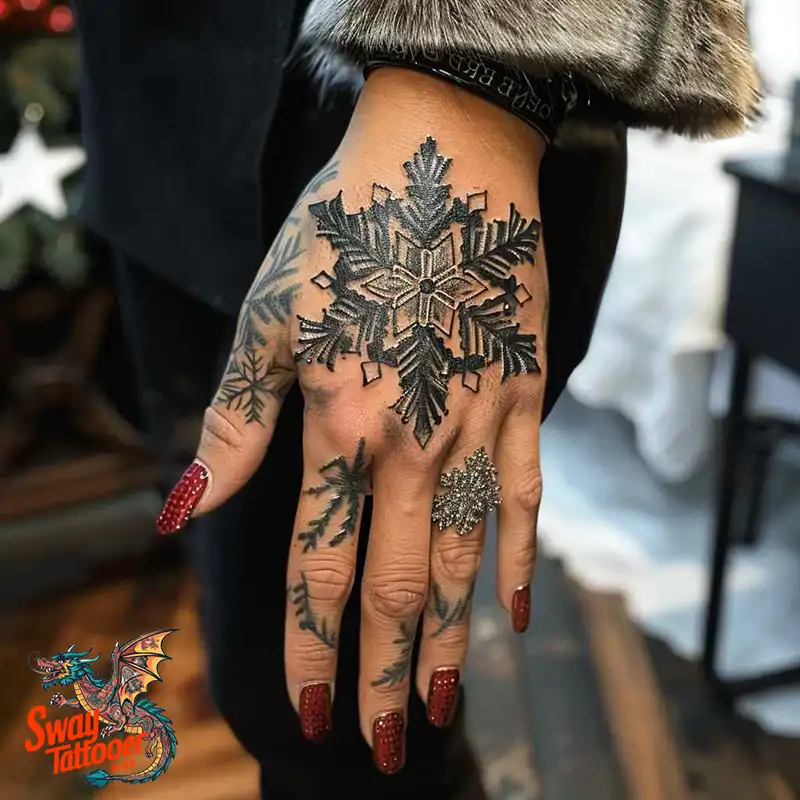

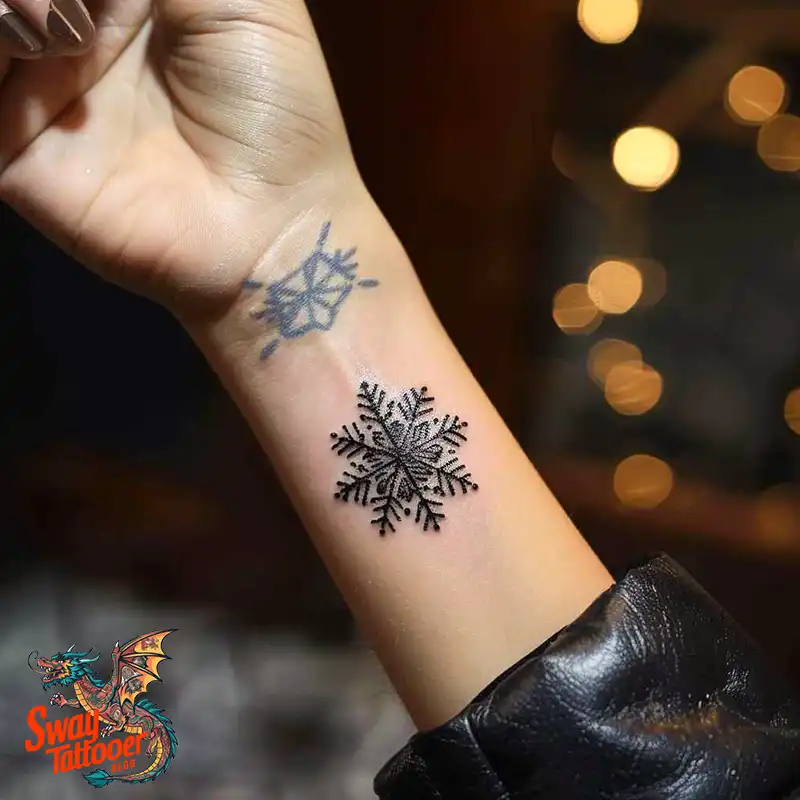

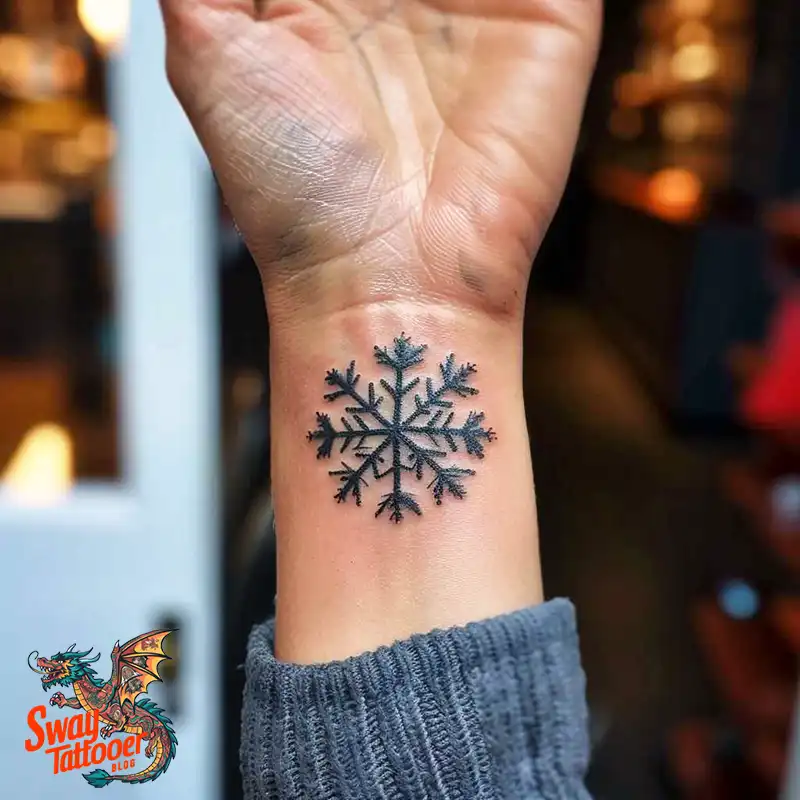








FAQs:
Why do my tattoos on hand fade faster than my arm tattoos?
Hand tattoos fade faster because of a unique set of problems :
High Cellular Turnover: The skin on your hands renews and sheds faster than skin on other body parts.
Constant Friction: Daily rubbing, washing, and movement break down the ink more quickly.
Movement: Constant stretching and bending of the skin on your hands and knuckles causes the ink to break up and soften over time.
How often will I need a touch-up?
Fading is normal on the hands, even for bold designs. For a fine line or finger tattoo, you should expect to need touch-ups perhaps every one to two years to maintain the lines and sharpness. Bolder, traditional tattoos are more durable, but still require maintenance over time. Regular moisturizing before a touch-up helps the skin hold the new ink better.
What is the most important rule for long-term clarity?
The most critical rule is sun protection. UV rays cause the most damage to all tattoos. Daily, year-round application of high-SPF sunscreen is absolutely mandatory to prevent fading and keep your hand tattoo vibrant.
Are Hand Tattoos Painful?
Yes, indeed— hand tattoos do hurt a little bit more compared to getting one on some other body part. The skin lies thin over your hands with lesser numbers of fatty layers than, say, the rest of your body. That means there is not much insulation between the needle and the bone. Your hands contain a high level of nerve endings, so it will be tender.
Pain tolerance is, however, different. Some people will tolerate it, and for some, it will be quite painful. It’s always best to discuss pain management options with your tattoo artist in preparation for your session.
Will a Hand Tattoo Fade Sooner Than in Other Places?
Yes, hand tattoos usually fade sooner than tattoos in other places. There are many reasons for this:
Exposure to The Elements: Our hands are constantly subjected to the bright sun, water, soaps, and other chemicals that could seriously and severely add to the fading of the tattoo.
Constant Use: The skin of our hands tends to regenerate quite fast considering constant friction and being put to use, which causes the tattoo to fade and blur over time.
Skin Structure: The texture of the skin of hands differs from that of any other area of the body, and the manner in which the tattoo ink is retained might be affected because of this.
You might have to go for frequent touch-ups, compared to the tattoos you usually get done in other body areas, to maintain the fresh look of your tattoo.
What Are the Risks Associated with Hand Tattoos?
Infection: As with all tattoos, there’s the risk of infection. Being the case, the hands are around the face and on numerous surfaces all the time, so it’s just all that much important that the area be kept clean and aftercare instructions followed carefully to the letter.
Ink Migration: Because the skin on your hands is structured in such a way, ink migration—placing the ink underneath one’s skin—can occur, potentially ending in a blurry or unbalanced design.
–Job Prospects : Job prospects will be adversely affected, depending on which profession or industry you are in, by visible tattoos on the hands. Professional considerations need to be pondered for a tattoo on the hand.
Allergic Reactions: Allergic reactions to the ink used in tattoos are rare, but possible.
Can I Get Any Design I Want on My Hand?
Technically, you can get any design you wish to be inked on your hand. However, there are a few practical considerations to be kept in mind:
Size and Detail: Being a small canvas size with a lot of creases and folds, the skin might not allow any really fine detail in work that will hold up well over time. It often makes them better to be bolder and simpler in design.
Placement: The shape and anatomy of your hand will influence the placement and appearance of the tattoo. Areas like the sides of the fingers are known to fade more quickly.
Symbolism and Meaning: The design should have a lot of cultural or personal significance, since the tattoo will be seen by a lot of people.
Consult a professional tattoo artist to seek advice on designs workable in the hand area and to ensure that its final look is well presented and durable.
Conclusion:
Getting a hand tattoo is the ultimate commitment in body art. It is a powerful, highly visible symbol that demands respect for its deep history and the unique biological challenges of the skin.
This tattoo will require more vigilance, more aftercare, and more frequent touch-ups than any other placement. But if you embrace the required commitment—choosing an expert artist, using bold lines, and following a strict routine of washing and moisturizing—you will wear a profound, enduring statement that perfectly reflects the unique strength and spirit of your own hands.


Leave a Reply